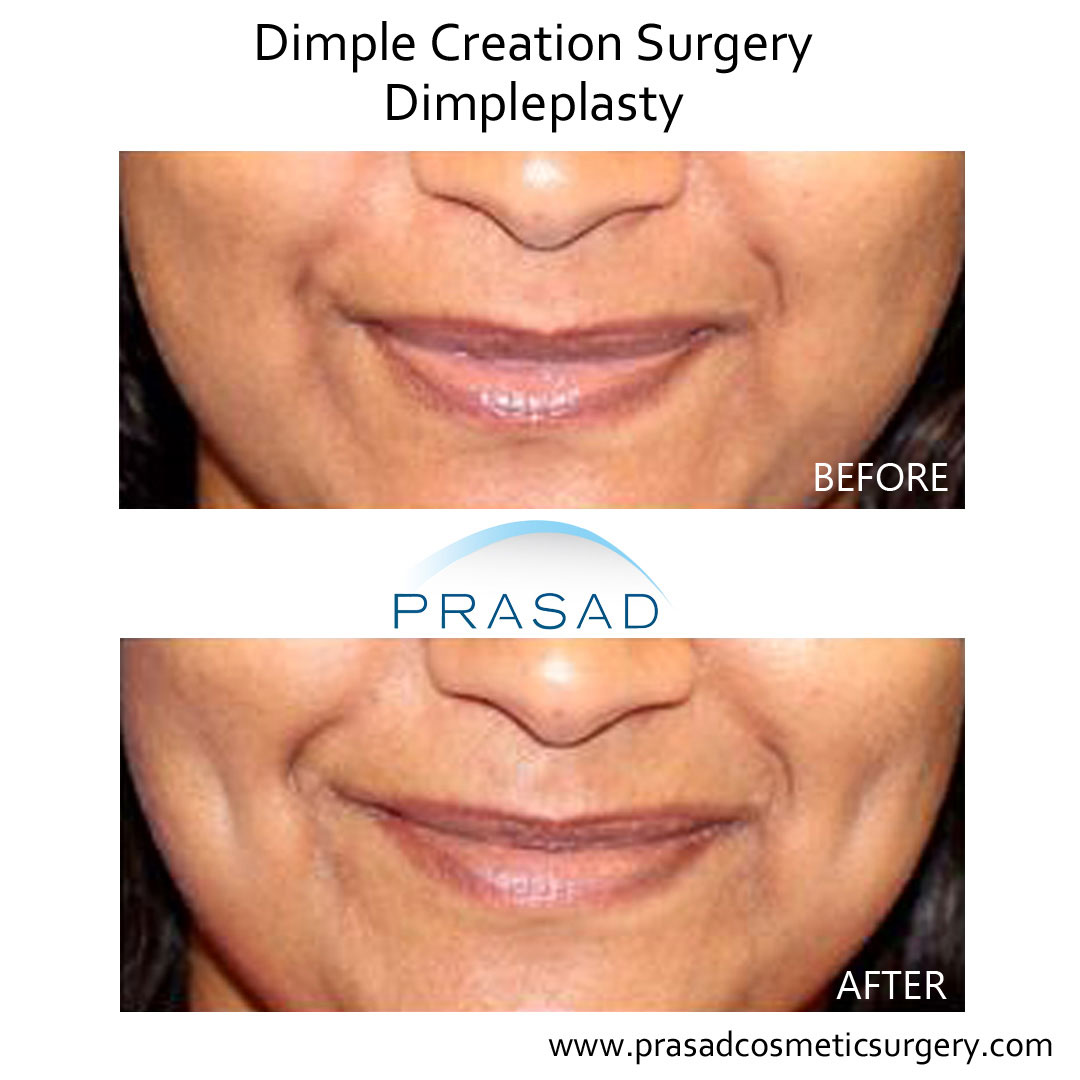There is something rather special about dimples, isn't there? These small indentations on our skin, often seen when someone smiles, have a way of adding a touch of charm to a person's appearance. Many people find them quite appealing, and they are, in a way, little natural features that make each face or body a bit more unique. They are not just random marks, though; they actually come about because of specific things happening with our muscles or bones, or even how our skin connects to the parts underneath it. So, too it's almost as if our bodies have these little secrets, just waiting to show themselves.
Just like there are various kinds of plants, or different sorts of stories we enjoy, our physical forms also show a wide range of features. Dimples, as it turns out, are no exception to this idea of variety. You might think of them as just one thing, but they actually show up in several places and in somewhat different ways. Each type, you see, has its own little story about how it came to be and what makes it distinct. We often associate them with happiness, yet their presence is more about our individual make-up than any particular feeling.
To really get a good sense of these delightful indentations, it helps to look at the different forms they take. We can explore where they tend to show up, what causes them to form, and what makes each kind special. This way, we get a much fuller picture of these small, yet often talked about, features. So, let's take a closer look at the various kinds of dimples that people might have, and what makes each one stand out, as a matter of fact.
Table of Contents
- What Makes Dimples Appear?
- Cheek Dimples - A Classic Look
- Do All Cheek Dimples Look the Same?
- Back Dimples - The Marks of Venus
- Are There Other Kinds of Dimples?
- Chin Dimples - A Distinctive Mark
- What About Less Common Types of Dimples?
- Forehead and Shoulder Dimples - Rarer Appearances
What Makes Dimples Appear?
You might wonder what causes these little dips in the skin to show up in the first place. Well, it's actually a combination of things, often having to do with how our muscles are shaped or how our skin connects to the parts underneath. Sometimes, it's about a muscle that's a bit shorter than usual, or perhaps it divides into two parts instead of staying as one. This creates a small space, and when the muscle moves, like when you smile or make a certain expression, the skin gets pulled in, creating that familiar indentation. In other cases, it might be about how fat is distributed, or even how bones are formed. These features are often passed down through families, so if your parents or grandparents have them, you might too. It's, you know, a bit like inheriting eye color or hair type; these physical characteristics are often part of our genetic makeup. The way these things come together creates the many types of dimples we see.
Cheek Dimples - A Classic Look
When people think of dimples, they are usually picturing the ones on the cheeks. These are, by far, the most widely recognized and talked about. They appear when a person smiles, laughs, or makes certain facial expressions. The reason they show up has to do with a specific muscle in the face, called the buccinator muscle, or sometimes other muscles nearby. For some people, this muscle, or a connecting one, might be shorter than average, or it might have a split in it. When the muscle contracts, which happens when you smile, it pulls the skin inward, making that little dip. It's a bit like pulling a string on a curtain to gather it. These particular types of dimples are often seen as a sign of youthfulness and happiness. They can be quite prominent, or just a slight indentation, really, depending on the person and how their facial muscles are structured. Many cultures actually consider them a sign of beauty, which is interesting.
Do All Cheek Dimples Look the Same?
It's a fair question to ask if all cheek dimples are alike, and the simple answer is no, they are not. Just like there are different types of apples or different types of flowers, cheek dimples come in a few different forms. Some people have a single dimple on one cheek, while others have two, one on each side. These are probably the most common variations. Then there are those who have what some call "long dimples" or "vertical dimples," which stretch a bit more from the corner of the mouth upwards. Others might have very small, almost pinpoint-like dimples. The depth and size can also vary quite a lot. Some are deep and very noticeable, even when the face is at rest, while others only show up with a really wide grin. So, in some respects, the appearance of these types of dimples can be quite diverse, making each person's smile truly their own. It's all about the subtle differences in muscle structure and how the skin attaches.
Back Dimples - The Marks of Venus
Moving away from the face, another well-known type of dimple can be found on the lower back. These are often called "dimples of Venus" for women, and "dimples of Apollo" for men, after the Roman gods. They appear as two symmetrical indentations, one on each side of the spine, just above the buttocks. Unlike facial dimples, these do not appear due to muscle movement. Instead, they are caused by short ligaments that connect the skin directly to the iliac crest, which is a part of the pelvis bone. These ligaments create a slight pull on the skin, forming the indentations. They are also often linked to genetics, meaning they tend to run in families. You know, these types of dimples are usually present from birth and do not change much over time. Their visibility can be influenced by a person's body composition; they might be more noticeable in people with lower body fat, but they are not a sign of fitness or health. They are just another natural variation in human anatomy, really, and quite a charming one for many.
Are There Other Kinds of Dimples?
When we talk about the different types of dimples, it's easy to focus on the cheeks and the back, but there are, in fact, other places where these indentations can appear. These might be less common or less talked about, but they are still distinct forms of dimples, each with its own unique cause and appearance. Just like there are different types of trees in a forest, or different types of stories in a book, the human body holds a lot of variety. Exploring these less common variations gives us a more complete picture of how these charming little dips can manifest. It's pretty interesting to see how these small features can show up in unexpected spots, and what makes them unique. We're talking about features that, while not as widely recognized, are just as much a part of human diversity. So, yes, there are indeed other kinds of dimples that are worth a look, too it's almost like finding hidden gems.
Chin Dimples - A Distinctive Mark
One of the more recognizable, yet perhaps less common than cheek dimples, is the chin dimple, often called a "cleft chin." This is a single indentation found in the middle of the chin. It gives the chin a somewhat split or V-shaped appearance. The cause of a chin dimple is quite different from that of a cheek dimple. It's not about a muscle pulling the skin, but rather about the bone structure of the jaw. Specifically, it happens when the two halves of the lower jaw bone, which usually fuse completely during development, do not fully join together in the middle. This slight gap or indentation in the bone then creates the visible dimple on the chin. This characteristic is strongly genetic, meaning it's usually passed down through family lines. If one of your parents has a cleft chin, there's a good chance you might too. These types of dimples are present all the time, not just when you make a facial expression, and they add a very distinctive look to a person's face. It's a rather unique feature, really, that sets some people apart.
What About Less Common Types of Dimples?
Beyond the well-known cheek, back, and chin dimples, there are some other types of dimples that show up less frequently. These are not as widely discussed, but they do exist and are just as much a part of the fascinating variations in human anatomy. Sometimes, people might notice small indentations in places like the forehead or even on the shoulders. These are often caused by similar principles to the more common dimples, such as variations in muscle attachment, fat distribution, or bone structure, but they occur in areas where such features are simply not as typical. It's like finding a rare type of bird; they are out there, but you don't see them every day. These less common types of dimples remind us that the human body is full of subtle differences, and each person's physical makeup is truly unique. They might not be the first thing you think of when someone mentions dimples, but they are certainly worth noting, in a way, for their rarity.
Forehead and Shoulder Dimples - Rarer Appearances
Among the rarer types of dimples, you might occasionally come across forehead dimples or even shoulder dimples. A forehead dimple, sometimes called a "forehead cleft," is similar in concept to a chin dimple, but it's on the forehead. It can appear as a vertical line or a small indentation, often caused by the underlying bone structure or the way the forehead muscles attach to the skin. It's not something you see every day, but it does occur. Then there are shoulder dimples, which are even less common. These might appear as small depressions on the shoulders, perhaps near the collarbone or on the deltoid muscle. Their exact cause can vary, but it often relates to the way the skin is tethered to the underlying muscle or bone, or even the distribution of fat in that area. These types of dimples are truly quite unique and are typically not as pronounced or as widely recognized as their cheek or back counterparts. They just add to the sheer variety of human features, showing how diverse our bodies can be, you know.


